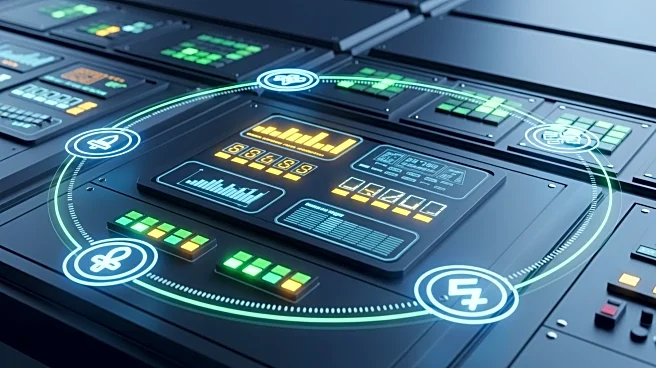What's Happening?
Data centers are facing new power quality challenges due to the increasing demand from artificial intelligence (AI) and high-performance computing (HPC) applications. These challenges include voltage fluctuations, harmonics, and subharmonics, which can
lead to system failures and inefficiencies. Traditional power quality solutions are insufficient for the unique demands of AI workloads, prompting the development of new technologies like capacitive energy storage systems (CESS) to mitigate subharmonics. These systems help balance power supplies during surges, ensuring stable operations and protecting equipment.
Why It's Important?
The rise of AI and HPC is transforming data center operations, necessitating advancements in power quality management. Poor power quality can result in significant financial and operational risks, affecting data integrity and system reliability. By addressing these challenges, data centers can improve efficiency and reduce the risk of downtime, which is critical for maintaining competitive advantage in the tech industry. The adoption of new power quality solutions also supports the broader energy grid by minimizing disturbances and enhancing overall stability.
What's Next?
Data centers are expected to continue investing in advanced power quality solutions to accommodate the growing demands of AI and HPC. Collaboration with utility companies and adherence to interconnection standards will be essential for managing large AI loads. As technology evolves, data centers will need to stay ahead of power quality issues to ensure seamless operations and support the expanding digital infrastructure.
Beyond the Headlines
The focus on power quality highlights the environmental impact of data centers, as inefficient power use contributes to energy waste and carbon emissions. By improving power quality, data centers can reduce their environmental footprint and align with sustainability goals. This shift also underscores the importance of innovation in energy management as a key factor in the tech industry's future.
















